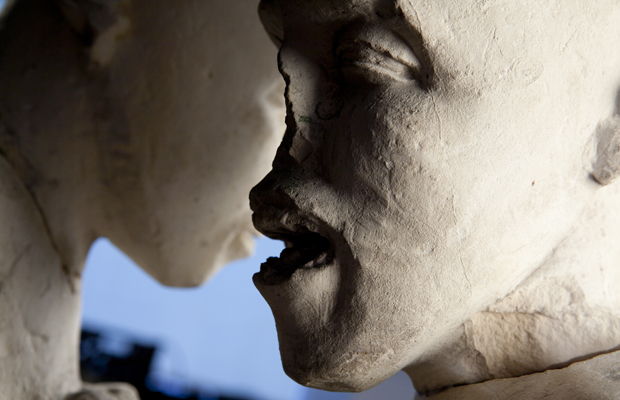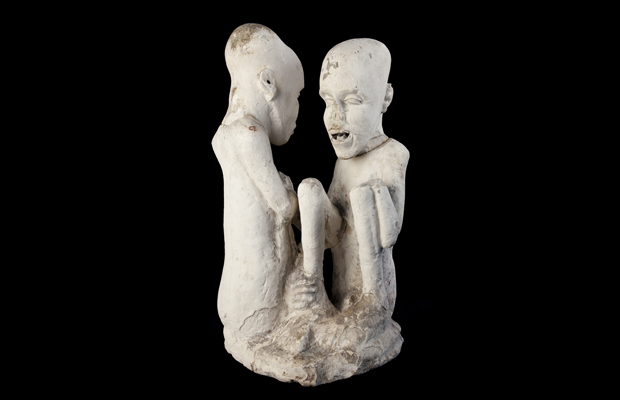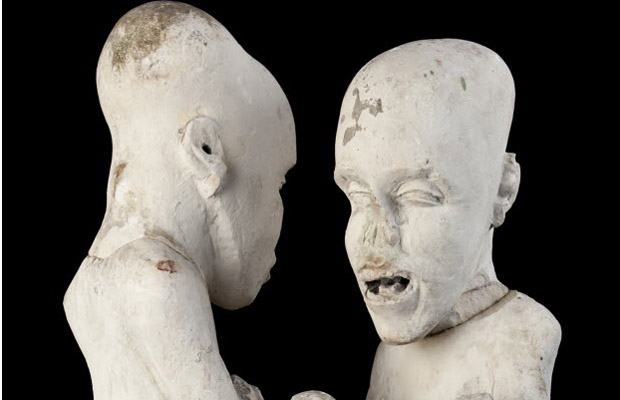
The hitch, he acknowledges, is that no expert among the many consulted over the past decade can identify the sculpture's age or artistic tradition, nor can they decipher the "ancient, yet unidentifiable language" etched into the artwork.
One archeologist "suggested the statue was either from a pre-dynastic tomb or was an outright fake," Epstein said.
The two nude subjects, one a male and the other possibly a female holding a child, are depicted in a sitting position with abnormally large heads and elongated limbs.
The sculpture was brought to Canada in the 1940s by Vincent and Olga Diniacopoulos, Greek immigrants from France who had amassed a world-class collection of antiquities gathered from Egypt, Israel and other ancient sites.
They later opened a gallery in Montreal, and the family's vast collection was donated about 10 years ago to Concordia.
Many of the objects were sold to support research and to fund scholarships at the university, Epstein told Postmedia News on Tuesday. Several items have become showpieces at leading institutions around the world, including the Royal Ontario Museum in Toronto.
"This collection really wowed the international collectors' audience, and amassed some of the largest prices at auction at the time in New York," he said. "Less than one per cent of the collection were deemed to be fakes or forgeries."
But experts were never able to discern the story behind the seated nudes.
In announcing a three-day exhibit of the sculpture beginning Wednesday in Montreal, Concordia invited scholars and the general public alike to offer ideas about its origins and to speculate on the true value of the artwork.
"Grotesque or beautiful? Priceless or worthless? Rare antiquity or outright fake?" the university provocatively asked. "So far, no authority has been able to confirm the sculpture's pedigree."
The Diniacopouloses, though, had thought so much of the sculpture that it was the centrepiece of their Montreal marketing materials decades ago. And while there is little documentation about the artwork's provenance, the couple had listed the object under the title "The Starving of Saqqara" - a reference to one of Egypt's largest burial grounds.
Epstein said the object may have come from an Egyptian tomb and could represent "images of the conquered" - enslaved peoples symbolized in a trophy-like celebration of an ancient ruler's power.
Weighing about 80 kilograms and measuring about 70 centimetres in height, the sculpture is not being offered for sale at this time, said Epstein.
"The first step is to understand what it is," he said. "We're not fishing around for offers."
The sculpture is being displayed in conjunction with the publication of a second volume of scholarly essays about the Diniacopoulos Collection, which initially included 2,000 pieces of art from the ancient world.
"For centuries, ancient Egyptian cemeteries have been plundered by treasure hunters. Otherwise lost to scholarship, many of these antiquities later entered legitimate collections like the Diniacopoulos Collection, which fortunately have allowed their display and publication," one of the essayists, Susan Redford of Pennsylvania State University, writes in the new book.
And in his essay about The Starving of Saqqara, Swiss art historian Jean-Jacques Fiechter writes: "An experienced collector and connoisseur such as Vincent Diniacopoulos would not have bought this piece, nor shipped it at great cost to Canada, had it not been considered authentic."
rboswell(at)postmedia.com
Twitter.com/randyboswell





.....are very reminiscent of the 18th dynasty.